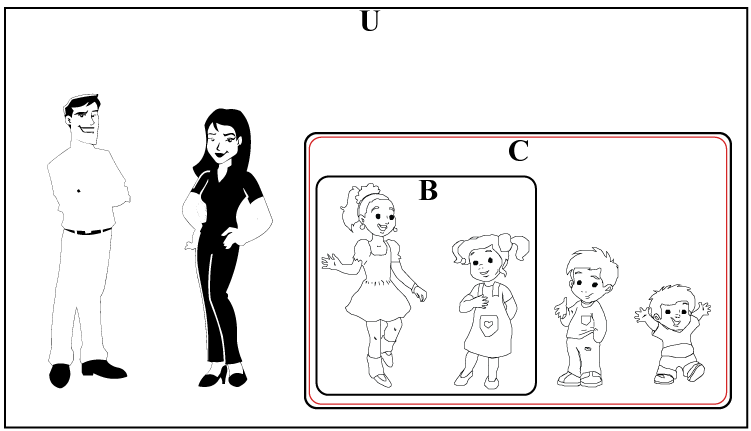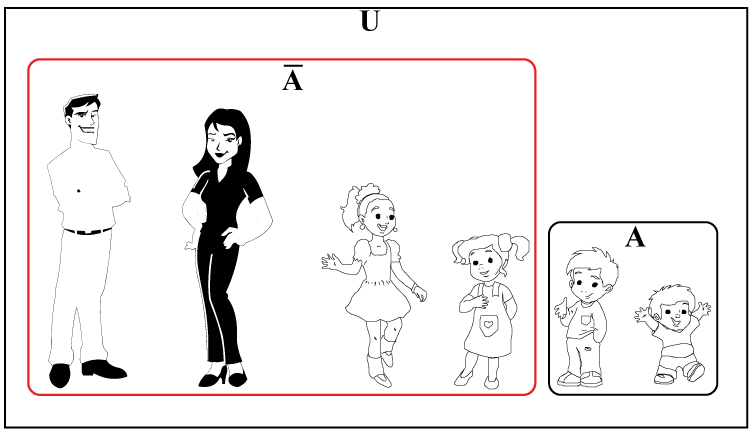Set Theory Concepts
∙ Introduction
∙ Definitions
∙ Universe & Subsets
∙ More on subsets
∙ Operations on sets
∙ Properties of operations
∙ Set graphs & Line graphs
Properties of union, intersection & difference among sets
 Recall that the set of children (C) is the union of set of boys (A) and set of girls (B), C = A ∪ B. In this case the number of elements in C (4) is the sum of the elements in A (2) and those in B (2).
Recall that the set of children (C) is the union of set of boys (A) and set of girls (B), C = A ∪ B. In this case the number of elements in C (4) is the sum of the elements in A (2) and those in B (2).
On the other hand, intersection of the sets A and B is an empty set. That is, A ∩ B = ϕ .
1. If the intersection among sets is an empty set, then they are called disjoint sets
Consideration of union of proper subset and its parent set results in an important theorem. This is stated as,
2. If B ⊂ C then B ∪ C = C.
Notice that this applies also for ⊆ .
 For example:
For example:
union of set of girls and set of children is the set of children
Consideration of intersection of proper subset and its parent set results in another important theorem. This is stated as,
3. If B ⊂ C then B ∩ C = B.
Notice that this applies also for ⊆ .
 For example:
For example:
intersection of set of girls and set of children is the set of girls
Set of all elements in the universe which are not part of set A is called
complement of A, and denoted as Ā .
 For example:
For example:
complement of set of boys is the set of family members that does not include the boys.
Notice that the set of boys and the set of rest of family members complement each other in the sense that their union is the set of all the family members. In other words, set of rest of the family members is a complement (contribute, enhance) and not compliment (praise) of set of boys.
Membership in a particular set requires at least one property. However, most sets are defined by members having multiple properties. Then,
set of several properties are intersections of sets whose membership is defined by respective properties.
 For example:
For example:
complement of set of boys is the set of family members that does not include the boys.

